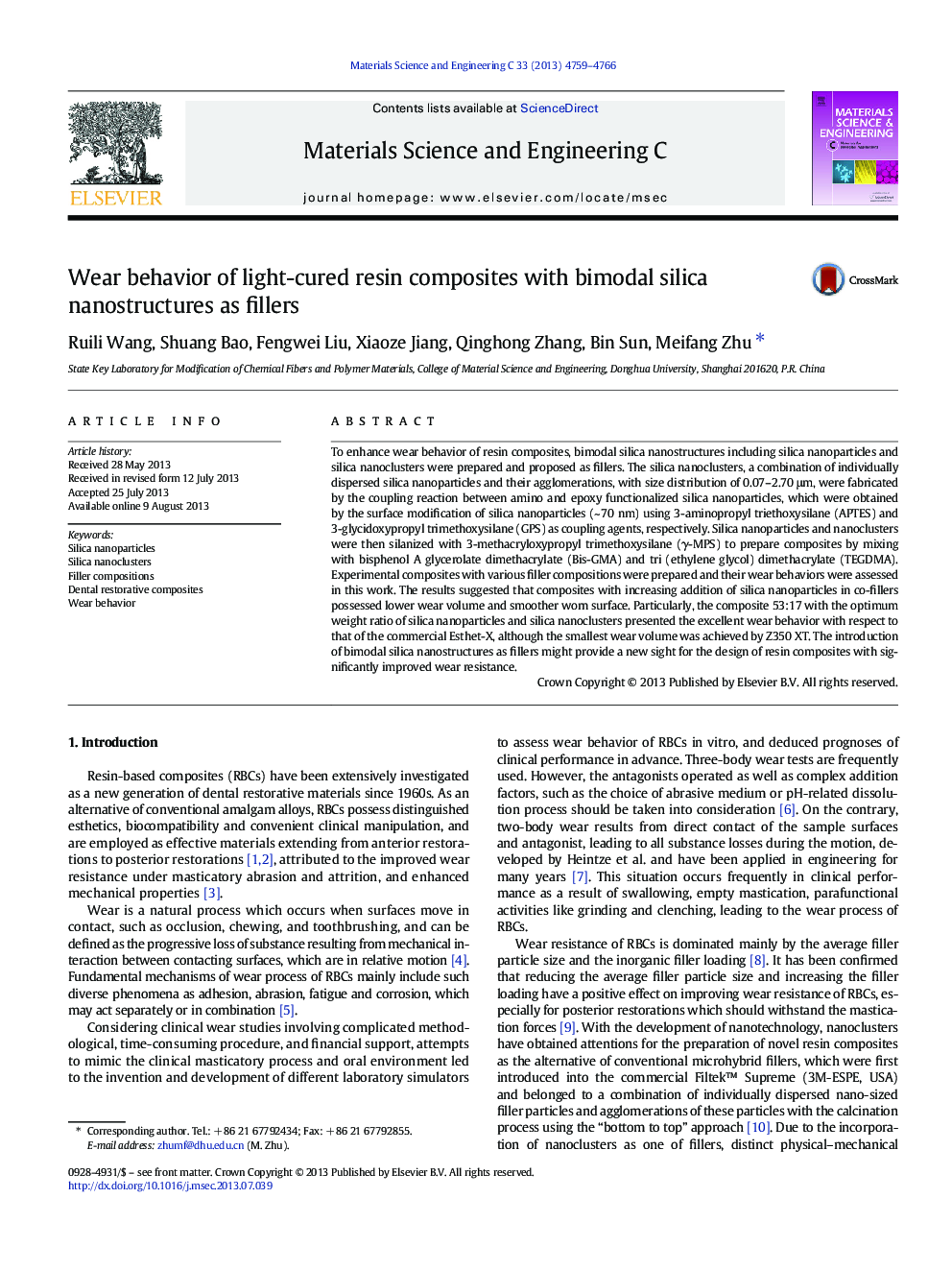| Article ID | Journal | Published Year | Pages | File Type |
|---|---|---|---|---|
| 1429499 | Materials Science and Engineering: C | 2013 | 8 Pages |
•Bimodal silica nanostructures were used as fillers to fabricate resin composites.•Resin composites with co-fillers showed decreased wear volume and smooth worn surface.•The composite 53:17 showed lower wear volume than that of Esthet-X under wear cycles.
To enhance wear behavior of resin composites, bimodal silica nanostructures including silica nanoparticles and silica nanoclusters were prepared and proposed as fillers. The silica nanoclusters, a combination of individually dispersed silica nanoparticles and their agglomerations, with size distribution of 0.07–2.70 μm, were fabricated by the coupling reaction between amino and epoxy functionalized silica nanoparticles, which were obtained by the surface modification of silica nanoparticles (~ 70 nm) using 3-aminopropyl triethoxysilane (APTES) and 3-glycidoxypropyl trimethoxysilane (GPS) as coupling agents, respectively. Silica nanoparticles and nanoclusters were then silanized with 3-methacryloxypropyl trimethoxysilane (γ-MPS) to prepare composites by mixing with bisphenol A glycerolate dimethacrylate (Bis-GMA) and tri (ethylene glycol) dimethacrylate (TEGDMA). Experimental composites with various filler compositions were prepared and their wear behaviors were assessed in this work. The results suggested that composites with increasing addition of silica nanoparticles in co-fillers possessed lower wear volume and smoother worn surface. Particularly, the composite 53:17 with the optimum weight ratio of silica nanoparticles and silica nanoclusters presented the excellent wear behavior with respect to that of the commercial Esthet-X, although the smallest wear volume was achieved by Z350 XT. The introduction of bimodal silica nanostructures as fillers might provide a new sight for the design of resin composites with significantly improved wear resistance.
Graphical abstractBimodal silica nanostructures including silica nanoclusters and nanoparticles were prepared and used as co-fillers to develop a resin composite presenting lower wear volume and smoother worn surface.Figure optionsDownload full-size imageDownload as PowerPoint slide
